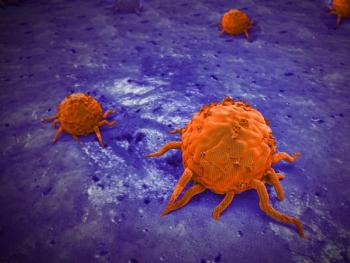
Oncology NEWS International
- Oncology NEWS International Vol 11 No 3
- Volume 11
- Issue 3
CAD Accurate in Digital Images
CHICAGO-Computer-aided detection (CAD) has been shown to improve the identification of breast malignancies on film-based mammography in studies involving large databases of films, said Kathryn O’Shaughnessy, PhD, director of clinical and regulatory affairs, R2 Technology, Inc., Los Altos, California. Now, the method has been shown to be equally accurate in the analysis of full-field digital mammography images, she said at the 87th Scientific Assembly and Annual Meeting of the Radiological Society of North America (abstract 995).
CHICAGOComputer-aided detection (CAD) has been shown to improve the identification of breast malignancies on film-based mammography in studies involving large databases of films, said Kathryn O’Shaughnessy, PhD, director of clinical and regulatory affairs, R2 Technology, Inc., Los Altos, California. Now, the method has been shown to be equally accurate in the analysis of full-field digital mammography images, she said at the 87th Scientific Assembly and Annual Meeting of the Radiological Society of North America (abstract 995).
Dr. O’Shaughnessy and her associates studied 90 biopsy-proven breast cancers, including 67 invasive carcinomas and 23 cases of ductal carcinoma in situ (DCIS), that had been diagnosed on a full-field digital system (GE Medical Systems’ Senographe 2000 D) during screening or diagnostic mammography at eight sites.
Most of the studies (82) were diagnostic. More than 60% of the lesions in the study were less than 2 cm in size; only a few were over 3 cm, she pointed out.
Images that had been acquired on a digital detector were sent to a soft copy review workstation. The investigators used R2 Technology’s ImageChecker to analyze each image and flag regions of interest. They then compared the flagged regions to exact lesion locations provided by the radiologists at the clinical sites.
CAD was considered to be correct if the system placed a marker at the site of a mass or a microcalcification that had been previously marked and annotated by a radiologist in at least one view. CAD results also had to distinguish between calcifications and mass lesions in order to be labeled as correct.
Results from CAD screening of digital mammograms were compared with those achieved by the same CAD system when examining 1,083 biopsy-proven breast cancers and 346 normal breasts that had been imaged with conventional film screen mammography. The total number of false-positive marks for either masses or microcalcifications was tallied for every normal case.
On the digital images, the CAD system correctly marked 33 of 34 micro-calcifications (97%) and 47 of 56 mass lesions (84%) for an overall sensitivity of 89%. The average number of false marks on normal cases was 0.55 per image. These results were equivalent to those obtained with film screening mammography. CAD correctly identified 399 of 406 microcalcifications (98%) and 580 of 677 masses (86%), for an overall sensitivity of 90%. The average number of false marks on normal cases was 0.5 per image. There was no statistical difference between CAD performed on full-field digital mammograms or film mammo-grams, Dr. O’Shaughnessy said.
Articles in this issue
almost 24 years ago
Bush to Complete 5-Year Doubling of NIH Budgetalmost 24 years ago
Campath-1H Safe and Effective in Refractory B-CLLalmost 24 years ago
Involved-Field RT Is Effective in Hodgkin’s Diseasealmost 24 years ago
FDA Approves Orfadin for Hereditary Tyrosinemia Type 1almost 24 years ago
Allovectin-7 Immunotherapy Active in Metastatic Melanomaalmost 24 years ago
HAART Ups Survival in Primary CNS Lymphoma Patientsalmost 24 years ago
DX-8951f/Gemcitabine Safe, Active in Advanced Solid Tumorsalmost 24 years ago
Pseudomonas aeruginosa Infections After Transplant Rare But Deadlyalmost 24 years ago
ODAC Recommends That FDA Approve Zometa for Bone Metastasesalmost 24 years ago
CAD Equivalent to Double-Read Mammogram ScreeningNewsletter
Stay up to date on recent advances in the multidisciplinary approach to cancer.



















































































